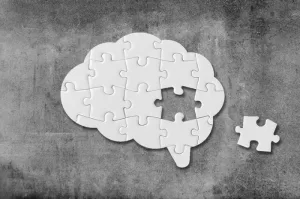Decoding Exercise: Stanford’s Sweeping Analysis Sheds Light on Health Benefits

- Stanford-led study on lab rats reveals comprehensive molecular changes in various tissues due to endurance exercise, shedding light on its health benefits and disease prevention mechanisms.
- Findings suggest potential for personalized exercise interventions based on genetics, sex, and health conditions to optimize health outcomes.
Exercise. It’s associated with increased muscle strength, improved heart health, lower blood sugar and just about every other physical improvement you can name. But how does regularly puffing away on a treadmill, biking up a steep hill or going for a brisk lunchtime walk confer such a dizzying array of health benefits?
We’re now closer to finding out, thanks to a vast new study led by Stanford Medicine. Researchers conducted nearly 10,000 measurements in nearly 20 types of tissues to uncover the effect of eight weeks of endurance exercise in laboratory rats trained to run on rodent-sized treadmills.
Their results highlight striking effects of exercise on the immune system, stress response, energy production and metabolism. They uncovered significant links between exercise, molecules and genes already known to be involved in myriad human diseases and tissue recovery.
The study is one of a series of papers published May 1 by members of a multicenter research group meant to lay the groundwork for understanding — on a bodywide, molecular level — exactly how our tissues and cells react when we push them to perform.
“We all know exercise is beneficial for us,” said professor of pathology Stephen Montgomery, PhD. “But we don’t know much about the molecular signals that manifest across the body when people exercise, or how they may change when people train. Our study is the first to take a holistic, bodywide look at molecular changes, from proteins to genes to metabolites to fats and energy production. It’s the broadest profiling yet of the effects of exercise, and it creates an essential map to how it changes the body.”
Montgomery, who is also a professor of genetics and of biomedical data science, is a senior author of the paper, which published on May 1 in Nature. Other senior authors are Michael Snyder, PhD, the Stanford W. Ascherman, MD, FACS Professor in Genetics, and associate professor of medicine Matthew Wheeler, MD. First authors are former genetics PhD student Nicole Gay, PhD; former postdoctoral scholar David Amar, PhD; and Pierre Jean Beltran, PhD, a former postdoctoral scholar at the Broad Institute.
Additional papers by Stanford Medicine researchers include a related published report in Nature Communications investigating the effect of exercise-induced changes in genes and tissues known to be involved in disease risk as well as a paper published on May 2 in Cell Metabolism, which focuses on the effects of exercise on the cellular energy factors called mitochondria in various tissues. Montgomery is the senior author of the Nature Communications paper and postdoctoral scholar Nikolai Vetr, PhD, is its lead author. Instructor of cardiovascular medicine Malene Lindholm, PhD, is the senior author of the Cell Metabolism paper, and Amar is the lead author.
“These papers further highlight the multiple impacts exercise training has on metabolism and health,” Montgomery said.
A coordinated look at exercise
The researchers involved in the study and the other simultaneous publications are part of a national group called the Molecular Transducers of Physical Activity Consortium, or MoTrPAC, organized by the National Institutes of Health. The effort was launched in 2015 to investigate in detail exactly how physical exercise improves health and prevents disease.
The Stanford Medicine team took on a lot of the heavy lifting, studying the effects of eight weeks of endurance training on gene expression (the transcriptome), proteins (the proteome), fats (the lipidome), metabolites (the metabolome), the pattern of chemical tags placed on DNA (the epigenome), the immune system (the…you get the idea).
Let’s just call it the sweat-ome.
They performed 9,466 analyses on multiple tissues in rats as the animals were trained to run increasing distances and compared the results with those of rats that loafed about in their cages. They paid special attention to the muscles of the leg, the heart, the liver, the kidney and a type of fat called white adipose tissue (the kind of fat that accumulates as pounds pile on); other tissues included the lungs, brain and brown adipose tissue (a more metabolically active type of fat that helps burn calories). The combination of multiple assays — think of all those -omes! — and tissue types pumped out results numbering in the hundreds of thousands for non-epigenetic changes to more than 2 million distinct changes in the epigenome. The results will keep scientists hopping for years.
Although this study served primarily to create a database for future analysis, some interesting nuggets vaulted to the top. First, they noted that the expression of 22 genes changed with exercise in all six of the tissues they focused on. Many of these genes were involved in what are known as heat shock pathways, which stabilize the structure of proteins when cells undergo stress including changes in temperature (feel that burn?), infection or tissue remodeling (hello new muscle fibers!). Others have been implicated in pathways that reduce blood pressure and increase the body’s sensitivity to insulin, which lowers blood sugar levels.
The researchers also noted that the expression of several genes involved in Type 2 diabetes, heart disease, obesity and kidney disease was reduced in exercising rats as compared with their sedentary counterparts — a clear link between their studies and human health.
Sex differences
Finally, they identified sex differences in how multiple tissues in male and female rats responded to exercise. Male rats lost about 5% of their body fat after eight weeks of exercise while female rats didn’t lose a significant amount. (They did, however, maintain their starting fat percentage while the sedentary females packed on an additional 4% of body fat during the study period.) But the largest difference was observed in gene expression in the rats’ adrenal glands. After one week, genes associated with the generation of steroid hormones like adrenaline and with energy production increased in male rats but decreased in female rats.
Despite these early, tantalizing associations, the researchers caution that exercise science is nowhere near the finish line. It’s more like the starting gun has just fired. But the future is exciting.
“In the long term, it’s unlikely we will find any one magic intervention that reproduces what exercise can do for a person,” Montgomery said. “But we might get closer to the idea of precision exercise — tailoring recommendations based on a person’s genetics, sex, age or other health conditions to generate beneficial whole-body responses.”
Source: Stanford Medicine















